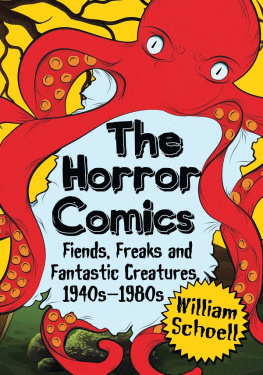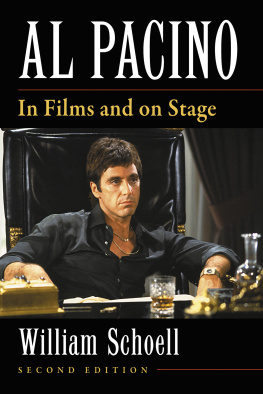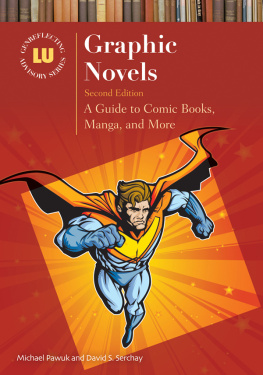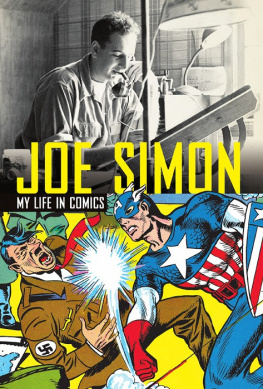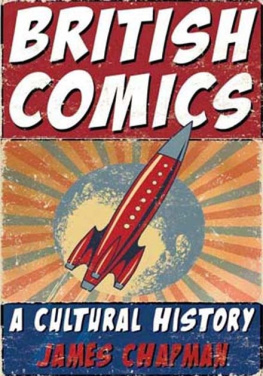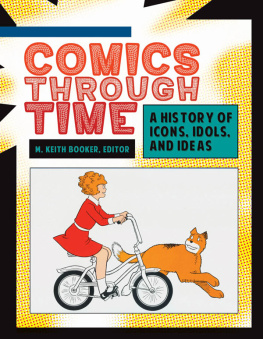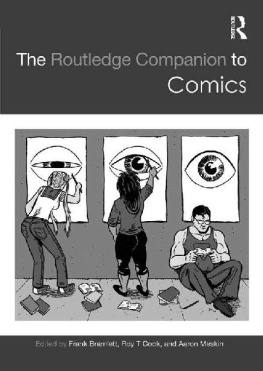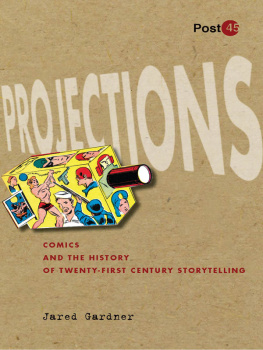Also by WILLIAM SCHOELL
Creature Features: Nature Turned Nasty in the Movies (McFarland, 2008, paperback 2014)
The Opera of the Twentieth Century: A Passionate Art in Transition (McFarland, 2006)
The Horror Comics
Fiends, Freaks and Fantastic Creatures, 1940s1980s
WILLIAM SCHOELL

McFarland & Company, Inc., Publishers
Jefferson, North Carolina
Illustrations are from the authors collection.
LIBRARY OF CONGRESS CATALOGUING DATA ARE AVAILABLE
BRITISH LIBRARY CATALOGUING DATA ARE AVAILABLE
e-ISBN: 978-1-4766-1835-7
2014 William Schoell. All rights reserved
No part of this book may be reproduced or transmitted in any form or by any means, electronic or mechanical, including photocopying or recording, or by any information storage and retrieval system, without permission in writing from the publisher.
On the cover: Octopus and background landscape 2014 iStock/Thinkstock
McFarland & Company, Inc., Publishers
Box 611, Jefferson, North Carolina 28640
www.mcfarlandpub.com
To the memory of my grandfather,
Jacob Schoell,
whom I take after in many ways
Preface
When most people think of horror comic books the first thing that comes to mind is the often grisly and controversial Tales from the Crypt and similar series from EC Comics. These comics are justifiably famous and certainly deserve their chapter in this book, but they are neither the beginning nor the end of the story. Horror stories appeared in comic books in the golden age of the 1940s, the same decade in which the first full-fledged horror anthology comic, Adventures into the Unknown, made its debut. Although horror comics were all but obliterated by the comics codemost metamorphosing into science fiction and fantasy comicsthey began reappearing in the silver age of the 60s, when there were long-running comic adaptations of such shows as The Twilight Zone and when Dell Comics came out with Ghost Stories, the first issue of which contained one of the most nightmare-inducing classics ever published. In the 70sthe bronze agea general horror boom in films and fiction, along with a relaxation of the comics code, brought about a virtual avalanche of horror material from all publishers, with Marvel boasting its Tomb of Dracula and Werewolf by Night, DC and Charlton mass-producing such anthologies as The Witching Hour and Scary Tales, and such publishers as Dell, Gold Key and the short-lived Atlas releasing much horrific and supernatural material.
Said materialbe it in the golden age or much latercame from a variety of sources. On occasion it ushered forth from the fertile imaginations of writers, but there was also quite a bit of borrowing, with plots influenced by or simply lifted from literature (Poe, Mary Shelley), radio shows (such as Lights Out!), movies, and even folklore. There were times, however, when it was just the opposite, and youll find in this volume certain stories that were clear influences on some famous horror films made years later; screenwriters and producers were not above reading comic books. Certain plots or themes were used over and over: the spirits of murdered men rise to haunt their murderers; a person makes a deal with the devil but discovers that Satan is rarely outwitted; a hen-pecked or harassed man or woman finally snaps and takes an ax to his or her spouse; a protagonist kills, steals and betrays every person and principle he knows to achieve life everlasting only to spend eternity paralyzed, in endless agony, or in jail for a life sentence. And so on.
The discussion of these comics follows a roughly chronological order in that the three parts of the book correspond to the golden, silver, and bronze age of comics. Within these parts chapters are presented according to the comics importance and influence. American Comics Group presented the first long-running horror comics series so it gets the first chapter, and EC Comics gets Chapter Two because it influenced countless comic books from many publishers, some of whom changed their style of storytelling just so they could seem more like EC. In general major publishers are covered first, and then the smaller ones. Due to the huge amount of material, black and white larger-format horror magazines such as Eerie and Creepy are not included, although some of Marvels black and white periodicals are mentioned for purposes of continuity, as some of their fearsome characters appeared in both comics and magazines. Horror comics of the golden age have been examined in other tomes with varying degrees of successmost books on the subject simply reproduce covers or stories without critical assessmentbut horror comics of the 60s and 70s have never come in for serious study before now.
This volume covers thousands of comic books from an historical and critical perspective. Most of the research for this book has consisted, simply, of reading or re-reading all of these comics, which was a dream come true for an author who loves both comic books and the horror field. While many horror comic stories are derivative, schlocky, poorly done, or fail to properly develop some interesting premises, there are also a lot of honest-to-goodness gems hidden among the gristle.
Part I
The Golden Age, Pre1956
One
American Comics Group (ACG)
American Comics Group (ACG) came out with what was to become the first of the long-running horror comics when they began publishing Adventures into the Unknown in 1948. The cover of the premiere issue shows a young couple about to enter a haunted house. Inside there is a host of stories: a creepy tale about a werewolf on the rampage, stalking a woman who suspects his true identity; Malevo, the Devils second-in-command (but even more evil), walks the earth as The Living Ghost; the spirit of a murdered man whose body was dumped into the sea supposedly haunts a newly opened resort hotel; and a woman is told she will inherit a fortune if she spends the night in a house which is said to be haunted by a dead mans restless spirit. The last two stories have a similar formula in that the ghosts turn out to be living people enacting nefarious schemes, although the presence of a true ghost is also revealed at the end. The comic also includes an adaptation of Horace Walpoles classic 1768 Gothic story The Castle of Otranto. An editorial on the inside cover assured the reader that superstition is ignorance There are no such things as ghoststhere never were, there never will be but explained that stories of the supernatural would live forever.
Adventures into the Unknown was an immediate hit with readers. The Living Ghost returned for more malevolence in the second issue and was to appear in the third, but the idea for turning it into a continuing feature was dropped even though many readers wrote in asking for more stories about Malevo. Instead in the fifth issue there appeared the first installment of The Spirit of Frankenstein. In this an aging, dying scientist named Pardway is jealous of his younger associate, Dan Warren. When the two build a hulking robot together, Pardway importunes Warren to put his brain in the robot after his death, which he does. Realizing that Pardways bitter spirit is controlling the robot and may cause it to do serious harm, Warren exorcises the spirit in a most unusual manner. As he explains it: A ghost is dependent on the atomic structure of the body it has left. By subjecting [the body] to nuclear fissionwill destroy his ghost!
Next page
